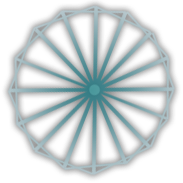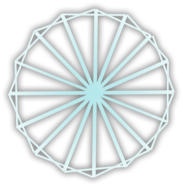CPT Football Practice
Nonviolence Home › Forums › shanti sena network › CPT Football Practice
- This topic has 0 replies, 1 voice, and was last updated 12 years, 6 months ago by
Erika.
-
AuthorPosts
-
January 14, 2013 at 3:17 pm #10050
Erika
MemberFootball Practice
2007 June 27CPT Hebron sponsors a football (American “soccer”) team for 10-12 year-old boys. When most of the team finally arrived, practice began. Runa, the Norwegian volunteer (not CPT) coach, and the boys ran three laps around the football field. Then they began practicing penalty kicks. Suddenly, one of the shebaab (juvenile males), maybe 16 years of age, caught the ball and walked away. The young players, much smaller than he, could only stop and watch in silence and powerlessness. He paraded around the asphalt school yard with it for maybe 15 minutes. Neither Runa nor I speak enough Arabic to have asked him to return the ball, or know the culturally appropriate way to hand such a situation.
Then a second, somewhat taller, shebaab, with steely blue eyes, approached the first as if to get the ball. For the next 10 minutes, the first shebaab tried to start a fight with the second. He threw out his chest and repeatedly tried to push the second. Runa and I both, sensing danger, intervened, repeatedly pushing our way between the two shebaab. Finally I got in front of the first shebaab and simply mirrored his moves. Although I could not explain it in Arabic, he seemed to understand that, no matter which way he moved, I would stay in front of him and prevent him from fighting. He eventually stopped trying. And he did not seem to be angry at me.
But then the second shebaab became aggressive. He began to attack the first shebaab. He swung his fists at him wildly. He began to swing his feet in very powerful kick-boxing style kicks. Runa and I both immediately returned to intervene. But the second shebaab was now far more aggressive the first had been. He began to charge the first, with his fists and his feet flying wildly. One of his swings glanced off my head, but did not connect solidly. I got my arms around his waist from behind and locked my hands together. I was able to restrain him for maybe 15 seconds, until he pried my hands and arms apart. His strength, and his silent rage, was impressive.
After almost 20 minutes of his attacks, the second shebaab subsided. The first shebaab sat down on a low concrete wall at the side of the field. After a minute I sat down beside him. I thought it was over. Then I noticed the second shebaab, 100 feet away, beginning to move towards the first. He slowly started to accelerate. I became alarmed. Then he began to accelerate quickly. It finally became clear he intended to slam into the first really hard. I jumped up and, just as he arrived, I threw a block (shoulder to those not familiar with American football) at him. I managed to deflect his charge just enough that he missed his target. He apparently had not noticed me moving to intercept him. Runa rushed over, and the two of us were able, finally, to prevent the fight from re-escalating.
This was definitely not an elegant example of nonviolent intervention. In fact, we used considerable physical force at moments. I later explained what happened to Zleekha, the team “mother”, and asked if our intervention was culturally appropriate, or if we should have let the shebaab fight. She replied that, with young boys she might let them fight, but not with older boys. Their fights can be dangerous. Forty years of occupation and violence, of being dominated and powerless, are gradually causing more and more Palestinians to turn, in immense frustration, inward on each other.
-
AuthorPosts
- You must be logged in to reply to this topic.







